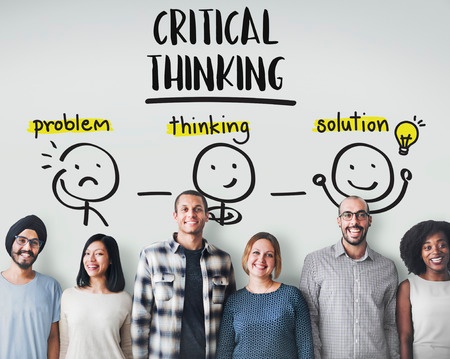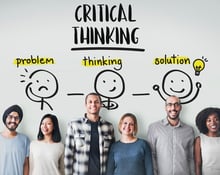Throw it in Zoom and See if it Sticks! (Part 1)
2020 was a year that witnessed a myriad of changes in the workplace, society, and how we interact, work, play, and…live. In the world of learning and...
2 min read
Brigg Patten : Oct 18, 2016 2:00:00 PM

 Curriculum design is a hot topic these days, especially with the debates over the Common Core teaching strategies in the United States. Often, many critics find that programs like the Common Core aren't helping students learn essential skills that they will need to learn. Despite the emphasis on testing and measurement, it seems that these programs might not be measuring the things that will actually help students succeed.
Curriculum design is a hot topic these days, especially with the debates over the Common Core teaching strategies in the United States. Often, many critics find that programs like the Common Core aren't helping students learn essential skills that they will need to learn. Despite the emphasis on testing and measurement, it seems that these programs might not be measuring the things that will actually help students succeed.
In order to make it in the proverbial real world, students need to develop critical thinking skills, and they need a curriculum that will foster these skills. This principle is easily applied to any learning situation, whether in school or business.
It All Starts with Design
The best teacher in the world will struggle if their curriculum is not developed in a way that will help students learn. In addition to the basics and standard procedures, students of all ages need to learn how to develop their critical thinking skills and learn to approach problems in a flexible and creative way.
Clearly, this skill is not going to be honed by doing dry math problems and worksheets. However, it can be hard for a teacher to know what will be effective. This is where curriculum design companies enter the picture.
A New Type of Lesson Plan
Many curriculum design companies are now working on developing these skills through challenging and creative methods. Gone are the textbooks and dusty worksheets of yesteryear, say hello to tablet-based lessons and flexible planning. The advent of the internet has created a huge space for students and trainees of all ages to access all kinds of material, and teach themselves in a more self-directed manner.
Self Determination and Learning
It is vital for learners to be able to have some say in their lessons if they are going to learn anything. As anyone with a child can tell you, nothing will get a kid to do something that they don't want to do. Therefore, lesson plans need to be tailored to each person’s individual interests and methods of learning, so they feel empowered and capable of learning at their highest potential. Additionally, students need the resources to help themselves when they run into trouble, so that their sense of self sufficiency and agency can grow.
There is a lot of discussion of "grit" in education, which is a student's ability to face tough challenges. However, grit is not an intrinsic ability, and the appropriate lesson plan goes a long way towards fostering this toughness. With the wrong plan, no amount of grinding teeth will truly empower students to learn.
This article offers some further insight into what makes an effective lesson plan and curriculum design. The program develops one central idea, which is that people need to develop their critical thinking skills instead of memorizing facts and procedures. The rationale is simple, according to the authors. While facts and simple procedures have a fairly straight forward application, this application is too specific and is not useful without broader critical thinking skills. Therefore, the development of more generalized and broad-based abilities to reason and problem solve are the foundation to being an effective learner.
Problems out in the real world are never as straight forward as a mathematics test, and this disconnect can have a negative impact on learners trying to apply their skills in real life. As a result, instructional design companies need to focus on taking these low level skills and teaching students to apply them to situations in the real world. This can be messy and difficult, but the payoff is tremendous, for both students and teachers. Students find themselves to be more capable and self-sufficient, prepared to tackle the real work, and teachers get the satisfaction of knowing that their work is not going to waste.

2020 was a year that witnessed a myriad of changes in the workplace, society, and how we interact, work, play, and…live. In the world of learning and...

Designing for Today's Hybrid Learning Environment Needs to be Strategic. Read on — or get the big picture in our infographic Instructional...
![[Infographic] Creating the Perfect Blend](https://blog.insynctraining.com/hubfs/InSync%20Training%20Creating%20the%20Perfect%20Blend.jpg)
So, you've designed great content for your virtual classroom — But, will the blended environment work for that content?